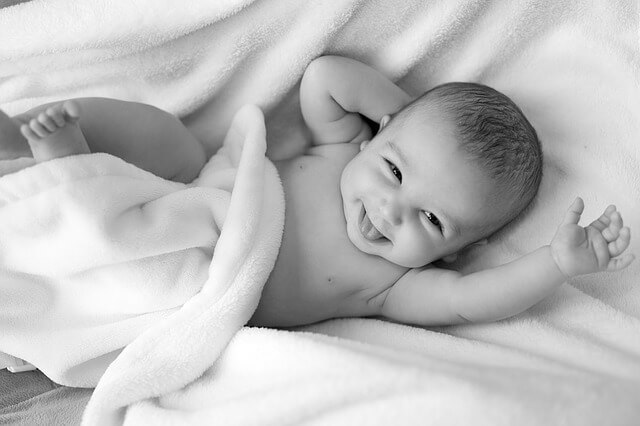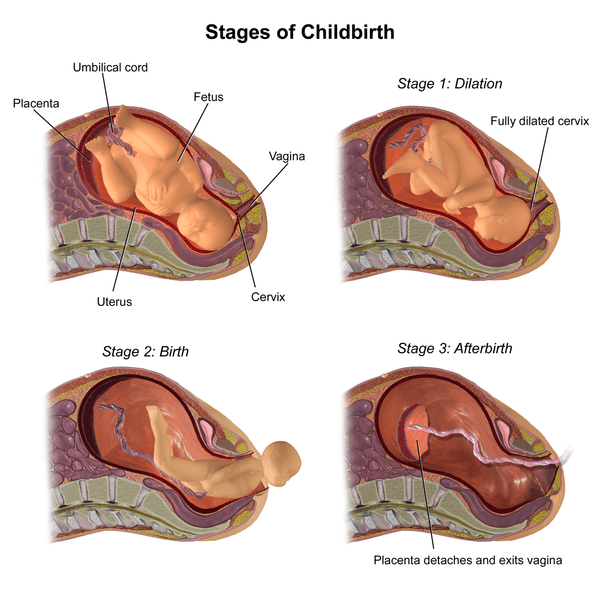Childbirth | After the journey of 40 weeks now it is the time to welcome new family members. After this stage, all the physical discomfort will gradually go away. But this stage is also the most painful.
No one knows what triggers labor. It doesn’t necessary that all women go through the same stages as described below.
But First, you should know how pregnancy initiates and how fetus develop? After that, you will have an idea of what will happen.
Initiation of pregnancy
follicle-stimulating hormone stimulates folliculogenesis and oogenesis, creates a mature egg cell. Egg cell fuse with male sperm also called fertilization. After fertilization, when an egg cell meets sperm after that the fused eggs is called fertilized egg.
The pregnancy risk is highest during the menstrual cycle from 5 days before and 1 to 2 days after ovulation. Fertilization can also occur by artificial insemination and in vitro fertilization.
Fertilization is used as the initiation of pregnancy. It usually occurs about 14 days before the next menstrual periods. The third point is also considered the true beginning of pregnancy by some people
This is the time when the future fetus attached to the lining of the uterus. This comes about 10 to 14 days after fertilization. now childbirth is 30 weeks away from this point.
Recommended for you
20+ Early Pregnancy Signs & Symptoms that might show you are pregnant
How did you fetus develop during pregnancy?
Women have two ovaries and fallopian tube. Sperm and egg cells fertilized in one of two Fallopian tubes. This fertilized egg move toward the uterus, this can take one week to complete its journey.
cell division in the fertilized egg start after 24 to 36 hours later. Cell division continues with a very fast rate and becomes a blastocyst. Blastocyst reaches into the uterus and attaches to uterine this process also implantation.
The mass of the cell will develop in an infant in the first 10 weeks. During that time, cells start to division in the different parts of the body. Till this time, the body, organ, nervous system is established.
By the end of the embryonic stage, all the organs are formed such as eyes, mouth, finder, ears, nervous and digestive system are formed. During this important structure which supports the embryo, such as placenta and umbilical cord also develop.
Placenta connects the embryo to the uterine wall which allows the embryo to take nutrient, gas exchange via the mother’s blood supply and waste elimination. The umbilical cord connects the placenta to the embryo. After ten weeks, the embryo becomes a fetus.
This is the end of the gestational stage and the beginning of the fetal stage.
At that time miscarriage risk decreased. At that time the fetus was about 30mm (3cm). During this stage, already formed body system develop. In this stage, the fetus continues to develop in both length and weight.
This speed has become very fast in the last weeks of the pregnancy. Electrical brain activity first detected in the weeks 5-6. This just a neural activity. Synapses begin forming at 17 weeks and multiply very quickly till 3-4 months of pregnancy. Now it’s time to know about childbirth and its stages.
Childbirth
Childbirth is the end of the pregnancy, also called labor. It is a process where an infant, leaving the woman’s uterus through the vagina.
Baby can leave the uterus through the vagina and by cesarean. The most common way of delivery is through the vagina. It involves three steps opening the cervix, birth of the baby, and delivery of the placenta.
Recommended for you
Stages of Pregnancy: Changes in Mother’s body & Fetus during Trimesters
Symptom of childbirth
- Women might feel that their baby drops into the lower position of the pelvis. This can lower the pressure on diaphragm making easier to breathe but can make her often visit the bathroom.
- You will feel stronger and regular contractions. Near the end of pregnancy, the uterine contraction starts to move the baby down into the birth control. At the end of pregnancy, you will feel a regular, more intense and rhythmic contraction.
- A woman’s uterus fetus is surrounded by the fluid called amniotic fluid. Pregnant woman’s water can break before labor starts. Once the water breaks the baby is no longer surrounded by a protective layer so there could be the risk of fluid.
- A woman might feel cramped in her pelvis. She may also feel aches in her lower back.
- As labor begins or several days before labor woman might notice brown, pink or slightly bloody vaginal discharge.
Childbirth stages
Childbirth involves three stages.
1. Shortening and opening of the cervix
The first stage begins with women’s start to regular contraction, this causes the cervix to open, soften and thin (effacement). This allows the baby to move into the birth canal.
Time:- 12 to 19 hours
The first stage of childbirth or opening of the cervix can take 12 to 19 hours. It varies from woman to woman.
shortening and opening of the cervix are also divided into two stages.
I. Early labor
During early labor cervix open and effaces. A woman can feel an irregular and mild contraction. as your cervix starts to open and you might notice a pink or slightly bloody discharge from the vagina.
Early labor can last from several hours to days.
II. Active labor
During active labor, the cervix will open from 6 cm to 10cm. During active labor, the cervix will open from 6 cm to 10cm. Contraction becomes stronger and regular. You might feel nauseated. You might feel your water break if it hasn’t already.
Active labor may last long 4-8 hour or more. In this, your cervix may dilate approximately 1 cm per hour.
During this time you can take a bath, take a walk and gentle massage between contraction.
2. The birth of the baby
This is the time of delivery of your baby. This can take a few minutes to hours to baby into the world.
During this, you might ask to push. When you push don’t hold the attention in your face just concentrate on your pushing.
Slowing down, pushing gives time to stretch rather than tear. You can see your baby head between your legs see it in the mirror.
Time:- 30 minutes to 2 hours
The second stage of childbirth or baby birth can take time 30 minutes to 2 hours.
3. The Delivery placenta
You will likely feel relief when your baby is born.
But a lot is still happening during the third stage of your labor, you will deliver the placenta.
Placenta delivered in 5-30 minutes but can last long for an hour. Your focus on will on your baby and you will breastfeed for your baby.
But will continue to have mild contractions close together, but less painful. You might be asked for one more lush to deliver the placenta.
After you deliver the placenta, your uterus will continue to contract to return to its normal size.
Time:- 5 to 30 minutes
The third stage of the childbirth or delivery of placenta can take 5 minutes to 30 minutes.
Recommended for you
Mother’s Body changes During Pregnancy – Shape, Size, and Working
Amazon pregnancy books (Recommended for you)
If you want to know more knowledge you can read this book, click here to know the prices
- Mayo Clinic Guide to a Healthy Pregnancy: 2nd Edition: Fully Revised and Updated
- Real Food for Pregnancy: The Science and Wisdom of Optimal Prenatal Nutrition
- Strong As a Mother: How to Stay Healthy, Happy, and (Most Importantly) Sane from Pregnancy to Parenthood: The Only Guide to Taking Care of YOU!
- The Mama Natural Week-by-Week Guide to Pregnancy and Childbirth
- What to Expect When You’re Expecting
- More
- NIH “Stages Of Childbirth: Stage I” “https://www.nichd.nih.gov/health/topics/labor-delivery/topicinfo/stages”
- Wikipedia.org “Childbirth” “https://en.wikipedia.org/wiki/Childbirth”
- Mayoclinic “Stages of labor and birth: Baby, it’s time!” “https://www.mayoclinic.org/healthy-lifestyle/labor-and-delivery/in-depth/stages-of-labor/art-20046545”
- NICE “Intrapartum care for healthy women and babies” “https://www.nice.org.uk/guidance/cg190/chapter/Recommendations”
- Wikipedia “Pregnancy” “https://en.wikipedia.org/wiki/Pregnancy”

